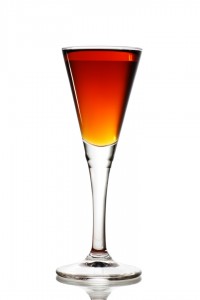In the Spotlight
Port: Dessert’s perfect partner
December, 2015
With winter’s chill settling in, we find ourselves focused on fending off the cold. Toques, parkas and insulated boots are nice, but a sweet sip of port? So much nicer. A little piece of Portugal, port warms the soul like the Iberian sun. Before you uncork a bottle of this centuries-old wine at your next dinner party, here are a few facts to help you break the ice.
What Is Port?
Pronounced vinho do porto in Portuguese, port is a fortified wine.
 How It’s Made
How It’s Made
Port is made from grapes grown in northern Portugal’s Douro Valley. Once picked, the grapes are taken to the winery that will produce the port. There the winemaker inspects and de-stems the grapes, then crushes them in giant fermenting tanks made of stone or concrete (called lagars). During fermentation, the winemaker adds brandy to the port, which stabilizes the port for long-term aging. After fermentation, the winemaker puts the port in wooden casks for aging. Legally, all ports must age for at least two years.
How to Serve It
To keep with tradition, serve port after a meal (on its own or with dessert) or as an aperitif. Port should be just under room temperature. Use a port glass, which is smaller than a regular wine glass, and pour about three ounces.
How to Store It
Even after port hits the bottle, it continues to age. To slow the aging process, store port in a dark, cool place with a consistent temperature (around 15C, ideally). Store bottles on their sides to keep the cork moist.
Eight Classic Categories
Ruby: Deep red in colour, ruby port is made from grapes from several harvests and is aged for about three years. It has berry and chocolate flavours and is rich and spicy.
Tawny: Amber in colour, tawny port is ruby port that’s been aged more than three years and up to 40 years. It has nut, raisin and caramel flavours.
Colheita: A tawny port, colheita is made from grapes grown at the same estate the same year.
Vintage: A ruby port is considered vintage when it’s made from grapes from a single-vintage harvest during a vintage year. A winemaker declares a vintage year when the quality of the harvest is exceptional. Vintage port is aged two or three years and is unfiltered. It has plum, spice, licorice and currant flavours.
Late-Bottled Vintage (LBV): A ruby port from a single-vintage harvest, LBV port is aged four to six years.
Single Quinta: It’s like an LBV but made from grapes from the same estate. Single quinta port is aged at least seven years.
Crusted: An unfiltered ruby port, crusted port gets its name from sediments forming a crust in the bottle.
White: Made from white grapes, white port can be either dry or sweet. It has caramel, honey and hazelnut flavours.
Purchasing Port
Vintage port is the rarest (and most expensive). Ruby port is the most affordable; it’s a great option for first-time port purchasers. Tawny port falls in the middle price-wise; generally, the more aged it is, the more expensive it is.
Pairing Perfection
Most often, port is paired with rich cheeses (think blue cheese, aged cheddar or any washed rind cheese), fruits, and caramel- or chocolate-based desserts. However, port also goes well with salty snacks (like nuts) or smoky flavours (like barbequed meat). t8n
Did You Know?
Port was invented in the 1700s because of a fight between the British and the French. The Brits blocked French seaports because of the dispute, which meant no French wine. The British started importing wine from Portugal instead. To keep the wine from spoiling during the long journey, they added brandy. Voila!
image © quayside / Dollar Photo Club













